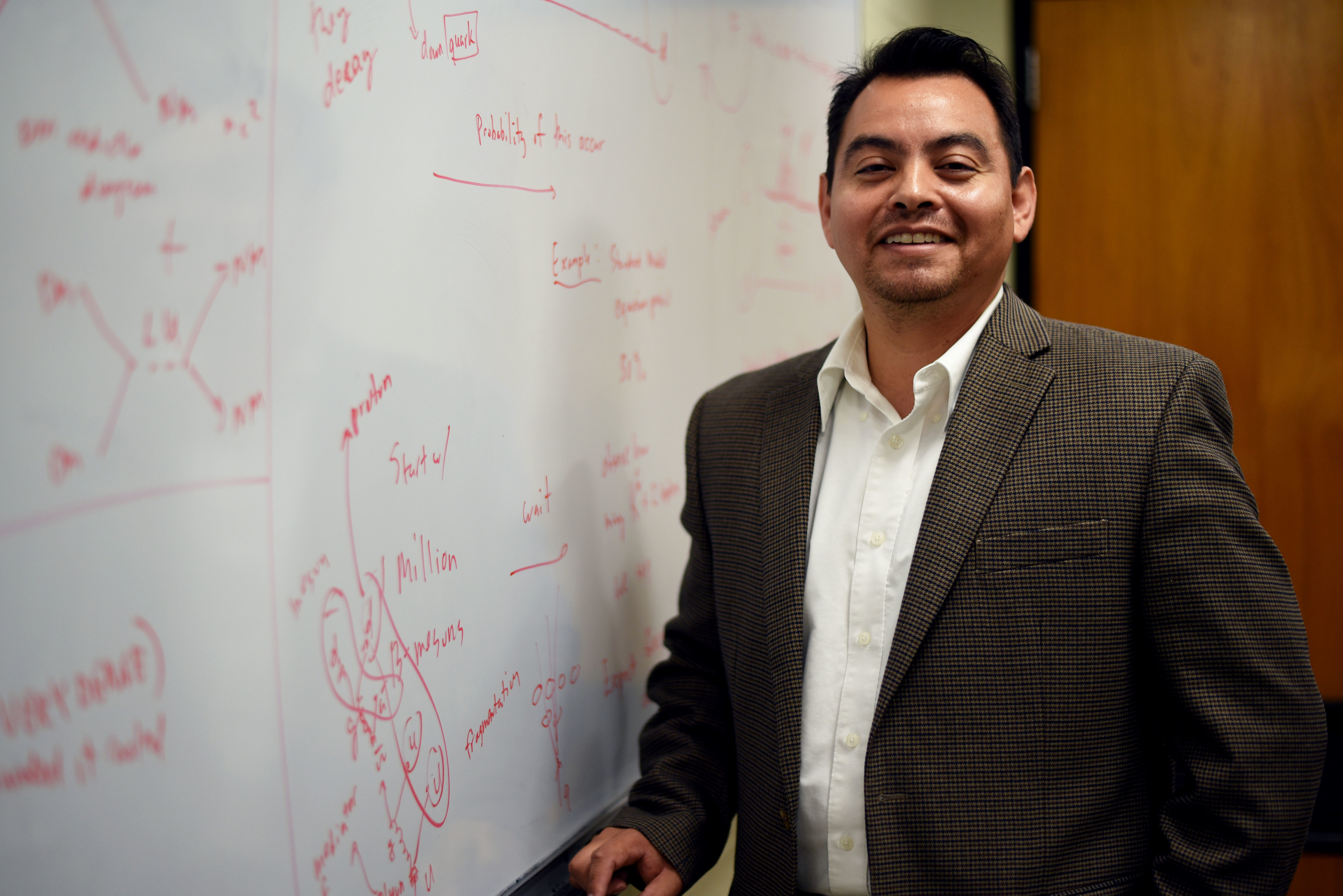Alfredo Gurrola Wins NSF CAREER Grant to Search for Source of Dark Matter
Assistant Professor of Physics Alfredo Gurrola has won a National Science Foundation (NSF) grant to further his search for the particles that make up dark matter and are responsible for dark matter interactions. The grant is part of the NSF’s prestigious CAREER program, which supports early-career faculty who have the potential to lead their fields in discovery and mentoring. Winning projects must also establish a foundation for a lifetime of integrated research and education. Gurrola is one of only 72 physicists to receive a CAREER award in 2019.
The study of dark matter tackles one of science’s greatest mysteries. Based on observations of gravitational effects and the behavior of stars, scientists know that dark matter exists and that it accounts for roughly 27 percent of the universe’s energy density. So far, however, no one has been able to figure out what particles make up dark matter, let alone capture or measure them. Gurrola believes the solution to this problem has to do with the Standard Model, an accepted set of equations that describe the fundamental building blocks of nature and how they interact. Or, rather, he believes the answer lies in what the Standard Model doesn’t describe.

Physicists have used the Standard Model to predict experimental outcomes for decades, but as the study of physics has advanced, experiments have begun to yield results that contradict the Standard Model’s predictions. In particular, the Standard Model has repeatedly failed to predict how B-mesons, a type of subatomic particle, will decay into other types of particles. In Gurrola’s view, that means there are new physics to discover—physics that may uncover what makes up dark matter and how it interacts.
His grant application proposed new methods for locating these particles at the Large Hadron Collider in Switzerland, where Gurrola has worked with the Compact Muon Solenoid (CMS) collaboration for the last several years. The new methods will target rare subatomic interactions that have been found to violate Standard Model rules.
“It’s like looking for a needle in a haystack,” Gurrola said. “Even if you find novel ways to look for these particles, you still have to measure their physical properties. They may escape the collider, and you have to infer their presence from that of other particles. That alone is not enough to allow the kinds of measurements we need to confirm the nature of these particles.”
But that challenge is also what excites Gurrola about the project. When he first began studying for his Ph.D., he went to his adviser for guidance on what research to pursue. The adviser pointed him toward a dark-matter project that had open positions because few students wanted to tackle such a difficult issue.
“I took it on because it was the opportunity I had, and the idea of dark matter was what interested me from childhood. I started with what wasn’t the most popular [experimental] technique, and I had to work uphill to prove to the rest of the physics community that maybe this really was a method we should consider,” Gurrola said.
Aside from the opportunity to pursue an unusual but potentially groundbreaking path, Gurrola is enthusiastic about the education side of his grant. He plans to use some of the NSF funds to create research and mentoring opportunities for students in the Fisk-Vanderbilt Bridge Program, which assists underrepresented women and minorities in obtaining science Ph.D.s. He also intends to start a summer particle physics academy for local high school students from underrepresented groups.
Including these efforts in his grant was the fulfillment of a promise Gurrola made to himself years ago, as a new Ph.D. student. Growing up in a Spanish-speaking home, he had struggled to communicate with teachers and classmates at school. His father, a high school teacher who had experienced the same challenge earlier in life, encouraged Gurrola to get past the language barrier by focusing on math and science. Gurrola and his parents often spent their evenings stargazing from the back of the family pickup truck—an experience that led to Gurrola’s fascination with the big mysteries of the universe.
“One of the reasons I’m in particle physics is because I always felt that by doing this type of research that targets innate human curiosity, I could use it as a way to excite other people like myself to pursue this type of science,” he said. “Often when I was a kid, I would read an article and it would seem like I could never get to [that level of expertise] because of cultural differences, money, opportunity, or the language barrier. I felt that if I were ever in a position where I could impact other people like myself, I could use my research as a way to get them into the field. To show them I did it, and you can do it, too.”
